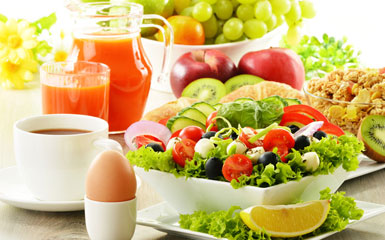 A chronic disease, diabetes can lead to many serious medical conditions if not managed properly. There are three types of diabetes – type 1, type 2, and gestational. Type 2 is the most common type and develops when an issue within the body makes blood glucose levels rise higher than normal, causing the body to not use insulin properly. People with diabetes need to control the sugar level in their blood through diet and regular exercises. Eating certain foods while limiting others can help control blood sugar level, improve overall well-being, and prevent future complications.
A chronic disease, diabetes can lead to many serious medical conditions if not managed properly. There are three types of diabetes – type 1, type 2, and gestational. Type 2 is the most common type and develops when an issue within the body makes blood glucose levels rise higher than normal, causing the body to not use insulin properly. People with diabetes need to control the sugar level in their blood through diet and regular exercises. Eating certain foods while limiting others can help control blood sugar level, improve overall well-being, and prevent future complications.
A diet rich in vegetables, fruits, and healthful proteins can have significant benefits for people with diabetes. The American Diabetes Association (ADA) recommends that people who have diabetes should aim to:
- Increase consumption of fruits and vegetables
- Consume lean protein
- Eat foods with less added sugar
- Avoid trans fats
Here is a list of the best foods for people with diabetes to eat and foods to limit or balance in their diet.
- Green leafy vegetables: Green leafy vegetables are packed with essential vitamins, minerals, and nutrients. Leafy greens, including collard greens, cabbage, bok choy, broccoli, spinach and kale are a rich source of potassium, vitamin A, and calcium as well as protein and fiber. According to a MedicalNewsToday article, researchers say that eating green leafy vegetables is helpful for people with diabetes due to their high antioxidant content and starch-digesting enzymes. Kale is considered to be a superfood for those with diabetes because it contains chemicals called glucosinolates that help neutralize cancer-causing substances and is also packed with potassium, which can help manage blood pressure levels.
- Non-starchy vegetables: These vegetables contain fewer calories and carbohydrates per serving, which will satisfy your hunger and boost your intake of vitamins, minerals, fiber, and phytochemicals. They include everything from artichokes and asparagus to broccoli and beets. According to a Healthline article, the American Diabetes Association (ADA) identifies most non-starchy vegetables as low GI foods with a ranking of 55 or less.
- Citrus fruits: Fruits such as oranges and grapefruit are a great source of fiber and some studies have found they have antidiabetic effects. One study found that eating citrus fruits could lower the risk of diabetes in women, but drinking the fruit juice could increase that risk. To maximize the antidiabetic effects of this citrus fruits, eat whole fruits rather than drink the juice.
- Fatty fish: Fat is an important part of healthy diet as it’s a major source of energy that helps your body to absorb some vitamins and minerals. According to the ADA, a diet rich in polyunsaturated and monounsaturated fats can improve blood sugar control and blood lipids in people with diabetes. Fish that are rich source of such fats include salmon, mackerel, sardines, albacore tuna, herring and trout. They are also full of vitamin D and selenium which is good for healthy hair, skin, nails, and bones. Since fish does not contain carbs, it won’t increase blood sugar levels. Moreover, fish oil is another source of omega-3 fatty acids. If you want to take supplements, ask your doctor for advice on which is best for your condition.
- Whole eggs: Whole eggs can help you get all the nutrients you need on a calorie-restricted diet. Eggs are rich in high-quality protein, fats and essential nutrients like vitamin D and choline. They improves risk factors for heart disease, promote good blood sugar control, protect eye health and keep you feeling full. The Healthline article reports on a one study which found that people with type 2 diabetes who consumed 2 eggs daily saw improvements in cholesterol and blood sugar levels.
- Whole grains: Eating whole grains may help decrease the risk of developing type 2 diabetes as it is full of antioxidants and soluble and insoluble fiber, which helps to metabolize fats and keep the digestive track healthy. But this works only if you choose the right type of whole grains. According to a Readers Digest article, people who eat 10 grams of grain-based fiber (oatmeal for breakfast or quinoa in your lunch salad) reduce their risk of diabetes by 25 percent.
Other foods such as berries (blueberries, strawberries, raspberries, and blackberries), nuts (walnuts), seeds (chia, flax seeds), unsweetened Greek yogurt are also diabetic-friendly foods.
If you have diabetes, you have to learn to balance meals and make healthful food choices while still including the foods you enjoy. However, talk to your doctor or dietitian before you make any changes to your diet to ensure that you’re making the best choices for your health.
